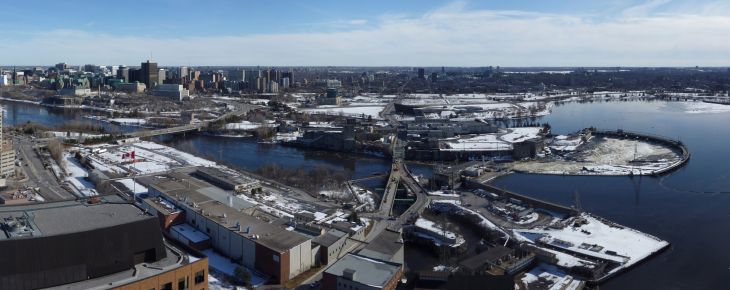

The mid-19th century saw the Chaudière rapidly turn into a major industrial engine in Canada. Valley timber limits were sold off in concert with depleted reserves in the American northeast.
A reciprocity trade treaty was signed between the Americans and Upper and Lower Canada in 1848. Massive markets were opened up for sawn lumber as the continent’s development expanded westward with towns and railways. Then, the Government sold off “hydraulic lots” throughout the Chaudière – by the Falls, on the Islands, on the mainland shores – in 1852. By Confederation in 1867, the Chaudière teemed with mills and power plants; it became the most heavily developed hydraulic site and most important sawmill centre in the nation. By the 1880s, some 350 million board-feet of lumber were cut there each year, enough to be stacked in a cube higher than the Peace Tower. In fact, the E.B. Eddy Company mills of the Chaudière became the largest manufacturers of wood products in all North America.
 Wordpress
Wordpress





